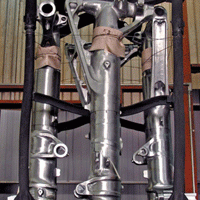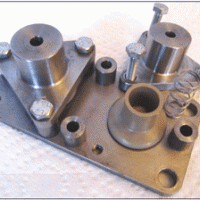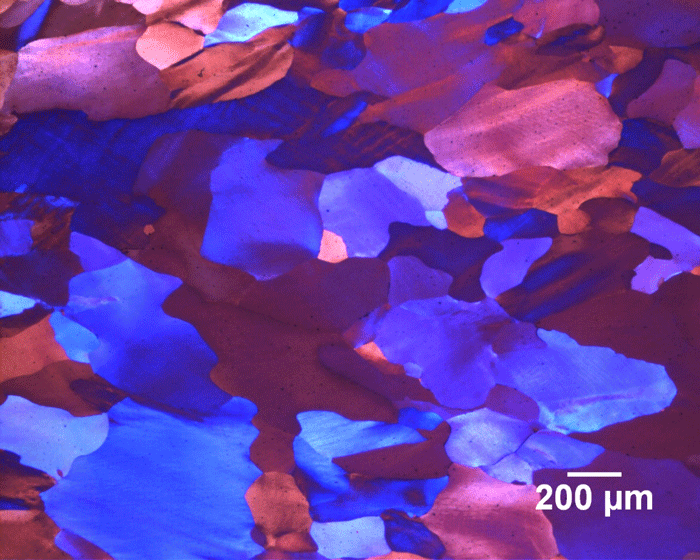The heat treatment of landing gear is a complex operation requiring precise control of time, temperature, and carbon control. Understanding the interaction of quenching, racking, and distortion contributes to reduced distortion and residual stress. Arguably, landing gear has perhaps the most stringent requirements for performance. They must perform under severe loading conditions and in many different environments. They have complex shapes and thick sections. Alloys used in these applications must have high strengths between 260 to 300 ksi (1,792 to 2,068 MPa) and excellent fracture toughness (up to100 ksi in.1/2, or 110 MPa×m0.5). To achieve these design and performance goals, heat treatments have been developed to extract the optimum performance for these alloys.
The alloys used for landing gear have remained relatively constant over the past several decades. Alloys like 300M and HP9-4-30, as well as the newer alloys AF-1410 and AerMet 100, are in use today on commercial and military aircraft. Newer alloys like Ferrium S53, a high-strength stainless steel alloy, have been proposed for landing gear applications. The alloy 300M (Timken Co., Canton, OH) is a low-alloy, vacuum-melted steel of very high strength. Essentially it is a modified AISI 4340 steel with silicon, vanadium, and slightly greater carbon and molybdenum content than 4340. The alloy is governed by standard AMS 6417. This alloy has a very good combination of strength (280 to 305 ksi, or 1,930 to 2,100 MPa), toughness, fatigue strength, and good ductility. It is a through hardening alloy to large thicknesses. . By D. Scott MacKenzie, Houghton International Inc. Valley Forge, PA



